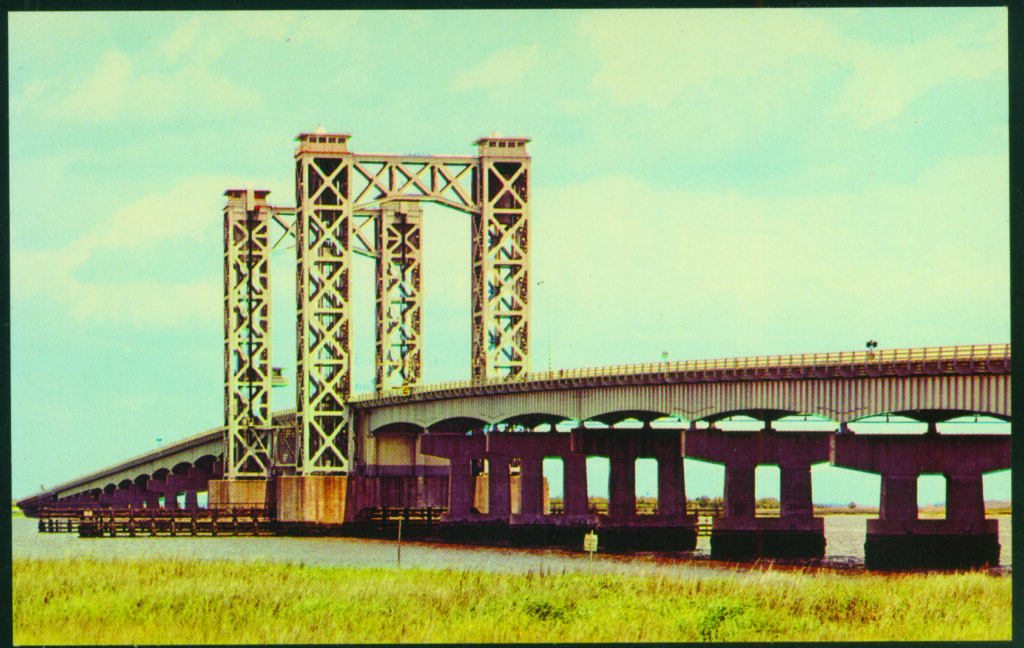A bridge and causeway opened Jekyll Island to a whole new world
BY REBECCA BURNS
When the State of Georgia acquired Jekyll Island in 1947, the island was reached in the same way it had been for thousands of years: by boat.
In the early months after the purchase, the state offered free rides on the ferry between the mainland and island. But soon, as contractors began creating a bridge across Jekyll Creek and connecting it to a causeway, navigating to the island became easier for tourists, though initially it was less accessible. The causeway today is known as a vantage point to spot wildlife, from roseate spoonbills and osprey to marsh hares and sometimes otters.
While the bridge and causeway were under construction (an $800,000 endeavor that cost the state more than the island itself), Jekyll remained hard to get to; “padlocked” in the words of the now-defunct newspaper, The Butler Herald. Finally opened in 1954, the project connected Jekyll Island to Latham Hammock, allowing drivers to quickly reach the island.
In the early 1960s, to lure tourists to Jekyll and promote the causeway, the Glynn Chamber of Commerce staged a promotion in which motorists were “pulled over,” only to learn they’d won a stay on the island, complete with a free toll for the bridge.
The original structure was a drawbridge that allowed boats to pass in the narrow channel between the island and mainland. Tom Alexander, now director of historic resources for the Jekyll Island Authority, recalls vacations to the beach when it seemed that the drawbridge was opened every time his family approached. “As a little kid I was frustrated because I just wanted to get to the beach, and we had to wait,” he says. His parents would encourage him to get out of the car. “They’d tell me to watch the boats go by, as a way to distract me while we waited.”
In 1985, when the bridge was stuck open for 12 hours, a man desperate to make it on time to his brother’s wedding swam the 1,400 feet across Jekyll Creek. Also stranded by the bridge that same weekend: Georgia governor Joe Frank Harris.
In 1996, the old drawbridge was replaced with the concrete span that leads to the island today. Some of the old bridge was retained to become a popular fishing spot.


